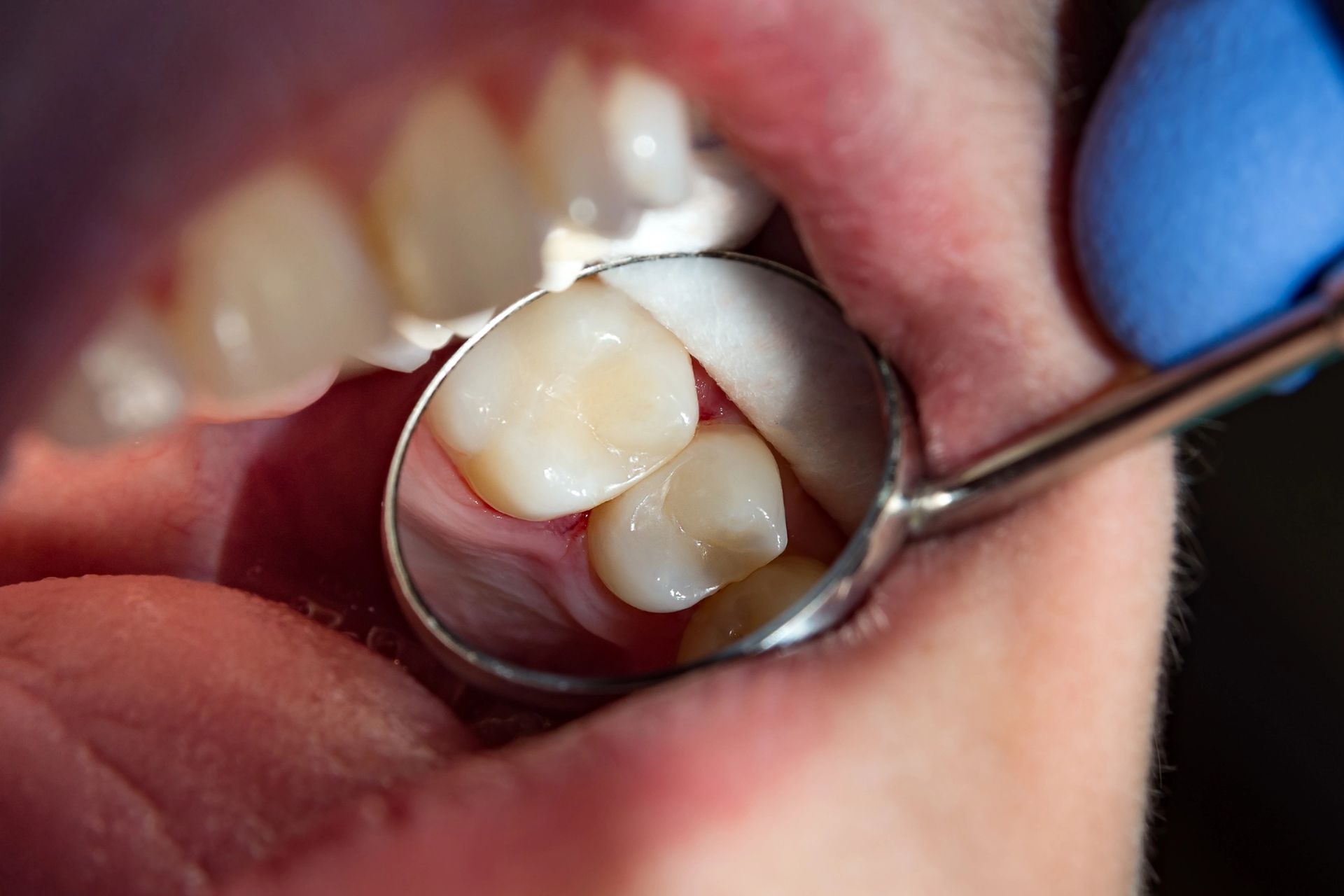
How Long Do Zirconia Crowns Last?
Zirconia crowns are renowned for their durability and strength, making them a popular choice for dental restorations. On average, zirconia crowns can last anywhere from 10 to 15 years, depending on various factors such as oral hygiene practices and the individual's lifestyle. The robust nature of zirconia material contributes to its longevity, providing a reliable solution for those seeking long-term dental restoration options. Understanding how long do zirconia crowns last can help individuals set realistic expectations for their dental care. While zirconia crowns are designed to withstand the pressures of daily use, their lifespan can be influenced by several factors, including the patient's oral habits and overall dental health. Regular dental check-ups and maintaining good oral hygiene can play a significant role in extending the life of these crowns. If you ever find yourself in a situation where your crown becomes dislodged, you might find it helpful to read more about what steps to take by visiting our page on Dental Crown Fell Off What to Do Next to Protect Your Tooth Factors affecting crown longevity The longevity of zirconia crowns can be influenced by several factors, which play a crucial role in determining how long do zirconia crowns last. One of the primary factors is the individual's oral hygiene practices. Regular brushing and flossing can help maintain the integrity of the crown by preventing plaque buildup and gum disease, which can compromise the crown's stability. Additionally, the skill and experience of the dental professional who places the crown can significantly impact its durability. A well-fitted crown is less likely to experience issues such as chipping or loosening over time. Another important factor is the patient's lifestyle habits. For instance, those who engage in teeth grinding or clenching may experience a shorter lifespan for their zirconia crowns due to the excessive pressure exerted on the dental work. Dietary choices also play a role; consuming hard or sticky foods can lead to wear and tear on the crown. Furthermore, regular dental check-ups are essential for monitoring the condition of the crown and addressing any potential issues early on. For those interested in exploring options for dental crowns, you can find more information about Affordable Dental Crowns Columbia by visiting our Affordable Dental Crowns Columbia page. Importance of Regular Dental Check-Ups Understanding how long do zirconia crowns last involves recognizing the crucial role of regular dental check-ups in maintaining their longevity. These appointments allow dental professionals to monitor the condition of your crowns, ensuring they remain in optimal shape and function. Regular check-ups can help identify any potential issues early, such as wear or damage, which might affect the lifespan of your zirconia crowns. By keeping up with these visits, you contribute to the overall health of your dental work and ensure that your zirconia crowns continue to serve you well over time.Role of Oral Hygiene Practices The longevity of zirconia crowns is significantly influenced by the role of oral hygiene practices. Maintaining a consistent and thorough oral care routine can help ensure that zirconia crowns last as long as possible. Regular brushing and flossing are essential to prevent plaque buildup, which can lead to gum disease and affect the stability of the crowns. Additionally, routine dental check-ups play a crucial role in monitoring the condition of the crowns and addressing any potential issues early on. Understanding how long do zirconia crowns last involves recognizing the impact of daily oral hygiene habits on their durability. For those in Columbia seeking more information, Design Dentistry Columbia offers insights into maintaining dental health, and you can learn more by visiting your local Columbia Dentist.
Impact of Dietary Habits
Dietary habits can significantly influence how long zirconia crowns last. Consuming a diet high in sugary foods and acidic beverages may contribute to the wear and tear of dental restorations, including zirconia crowns. These dietary choices can lead to an increased risk of decay around the crown margins, potentially compromising their longevity. On the other hand, a balanced diet that supports overall oral health can help maintain the integrity of zirconia crowns over time. Understanding the relationship between diet and dental health is essential for those looking to maximize the lifespan of their zirconia crowns.Influence of Teeth Grinding
Teeth grinding, also known as bruxism, can significantly impact how long zirconia crowns last. This involuntary habit exerts excessive pressure on dental restorations, including zirconia crowns, potentially leading to premature wear or damage. While zirconia is renowned for its durability and strength, the constant grinding motion can compromise its longevity over time. Understanding the effects of teeth grinding is crucial when considering how long zirconia crowns last, as it highlights the importance of addressing underlying dental habits that may affect their lifespan.Professional Cleaning Frequency
Understanding the professional cleaning frequency is essential when considering how long do zirconia crowns last. Regular dental check-ups play a crucial role in maintaining the longevity of zirconia crowns. During these visits, dental professionals can assess the condition of the crowns and perform necessary cleanings to prevent plaque buildup and other potential issues. While the specific frequency of professional cleanings may vary based on individual needs, maintaining a consistent schedule with your dentist ensures that zirconia crowns remain in optimal condition, contributing to their durability and lifespan.Signs of Crown Wear and Tear
Understanding the signs of wear and tear on zirconia crowns is essential for anyone curious about how long do zirconia crowns last. Over time, you might notice subtle changes such as slight discoloration or a dulling of the crown's surface, which can indicate natural aging. Additionally, small chips or cracks may appear, especially if the crown has been exposed to excessive force or grinding. These signs can serve as indicators that the crown is experiencing normal wear, which is a factor in determining its longevity. Regular dental check-ups can help monitor these changes and assess the overall condition of your zirconia crowns.htmlWhen to Consult a Dentist
Understanding how long do zirconia crowns last is essential for maintaining optimal oral health. While zirconia crowns are known for their durability and longevity, regular dental check-ups are crucial to ensure they remain in good condition. If you notice any discomfort, changes in bite, or visible damage to your crown, it may be time to consult a dentist. Regular professional evaluations can help identify potential issues early, ensuring that your zirconia crowns continue to function effectively and maintain their aesthetic appeal over time.Conclusion
Understanding how long do zirconia crowns last is essential for maintaining a healthy smile. For more information, call 803-408-7163 or [read reviews on Google Maps](https://maps.app.goo.gl/Mn6Pt8Sw7v1e67Za8).

Tooth fillings are materials used by dentists to repair cavities and restore decayed teeth. They help maintain tooth structure and function by filling in where the decay has caused damage.
The History of Tooth Fillings
The concept of dental fillings dates back several millennia, with evidence suggesting that ancient civilizations had their own methods to treat tooth decay. Historical records from as early as 7000 BC in the Indus Valley Civilization indicate the use of beeswax as a filling material. Over the centuries, the evolution of dental fillings has mirrored advancements in medical knowledge and materials science. By the 1800s, amalgam fillings, made from a mixture of metals, became popular due to their durability and ease of use, marking a significant development in dental care practices.
In modern times, the materials and techniques used for dental fillings have continued to evolve, offering better aesthetics and functionality. The history of dental fillings reflects not only technological progress but also a growing understanding of oral health. For more detailed information on the advancements in materials used for dental fillings, you might want to explore different types of dental fillings.
What are Tooth Fillings?
Tooth fillings are a common dental procedure used to restore the integrity and function of a tooth damaged by decay or trauma. The choice of filling material can depend on various factors including the location of the tooth, the extent of the repair needed, and aesthetic considerations. There are several types of materials used for tooth fillings, each with its own properties.
Among the most commonly used tooth filling materials are amalgam, which is durable and strong, making it suitable for filling cavities in the back teeth where chewing forces are greatest. Composite resins are another option, favored for their ability to match the color of the patient's existing teeth, thus providing a more natural appearance. Other materials include ceramics and glass ionomer, each offering unique benefits in terms of aesthetics and compatibility with the natural tooth structure. For more detailed information on these services, visit our Tooth Fillings Services in Columbia.
Reasons for Needing Tooth Fillings
Tooth fillings are commonly used to restore the integrity and function of teeth that have been compromised due to various reasons. One of the primary reasons for needing a tooth filling is tooth decay, which occurs when bacteria in the mouth produce acids that erode the tooth enamel. Additionally, fillings may be necessary to repair teeth that have fractured or chipped due to accidents or from biting on hard objects. Another reason for a filling could be to address wear and tear on teeth surfaces, which often happens over time due to habits like teeth grinding. Fillings help in maintaining dental health by restoring the affected tooth and preventing further decay or damage.
The Process of Getting Fillings
When considering what are tooth fillings, it's essential to understand the typical process involved in getting them. Initially, the dentist will assess the extent of tooth decay or damage. If a filling is deemed necessary, the affected area will be numbed to ensure comfort during the procedure. The dentist then removes the decayed material, cleans the cavity, and fills it with a suitable material to restore the tooth's structure and function. The entire process is straightforward and aims to improve dental health and prevent further decay. For those in Columbia looking for more information, Design Dentistry Columbia is a resource you might consider visiting. Learn more from this Columbia Dentist.
How Long Do Fillings Last?
When discussing what are tooth fillings, it's important to consider their longevity. Generally, the lifespan of dental fillings can vary depending on the material used and how well they are maintained. Amalgam fillings, commonly used for their durability, can last between 10 to 15 years, while composite resin fillings might need replacement every 5 to 7 years. Factors such as oral hygiene practices, the location of the filling, and the amount of wear and tear also significantly influence their durability. Regular dental check-ups are crucial to monitor the condition of fillings and to ensure they continue to function effectively.
Common Myths About Tooth Fillings
When discussing what are tooth fillings, it's crucial to address some of the common myths that often mislead patients. Many believe that fillings are extremely painful and require extensive recovery time, which is not typically the case with modern dentistry techniques. Another popular misconception is that all fillings eventually lead to more severe dental issues, such as root canals. However, fillings are actually a preventative measure to avoid further decay and more complex procedures. Understanding the truth behind these myths can help individuals make informed decisions about their dental health.
Impact of Fillings on Oral Health
When considering the question, "What are tooth fillings?" it's essential to understand their significant role in maintaining oral health. Tooth fillings, commonly used to restore decayed teeth, help prevent further decay by sealing off spaces where bacteria can enter. Not only do they help in alleviating pain, but they also restore normal function and appearance to the tooth. Moreover, the right type of filling can prevent the progression of decay and minimize the risk of more severe dental issues in the future, thereby promoting overall oral health and hygiene.
Signs You Might Need a Filling
If you're wondering what are tooth fillings, it's important to recognize when you might need one. Common signs include persistent tooth pain, sensitivity to hot or cold temperatures, visible holes or pits in your teeth, and dark spots on the tooth surface. Additionally, if you experience discomfort when biting down or notice an unusual taste in your mouth, these could also indicate the need for a filling. Regular dental check-ups can help detect these issues early, ensuring that your teeth remain healthy and intact.
Fillings and Sensitivity Post-Procedure
After receiving a tooth filling, it's common to experience some sensitivity and discomfort, which naturally leads patients to wonder, "What are tooth fillings?" essentially designed to restore decayed or damaged teeth. Post-procedure sensitivity can occur due to the tooth's response to the trauma of drilling and the introduction of a new material into the structure. This sensitivity should gradually subside over a few days to a couple of weeks. However, if the discomfort persists or worsens, it's crucial to consult your dentist to ensure the filling is properly set and there are no other underlying issues.
Conclusion
For more insights on what are tooth fillings, feel free to read reviews on Google Maps. If you have further questions, call us at 803-573-4577.







